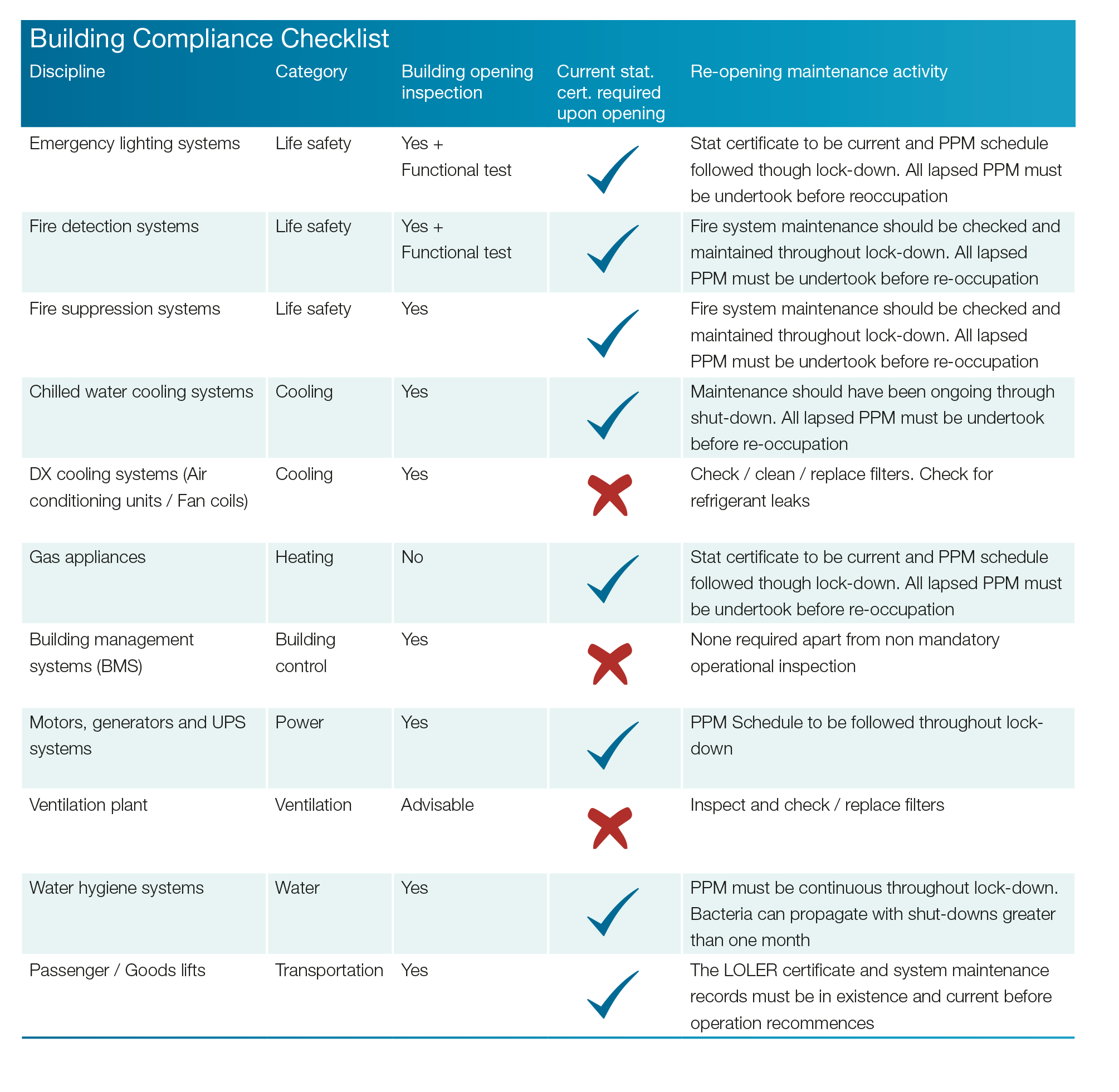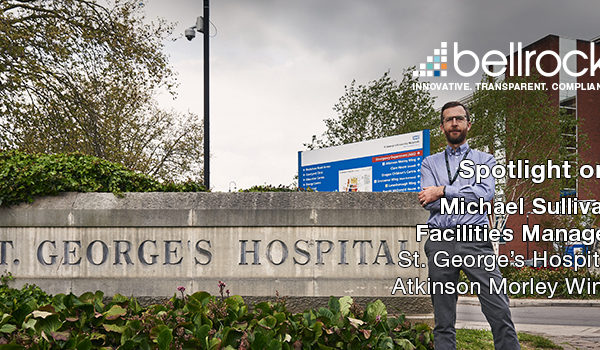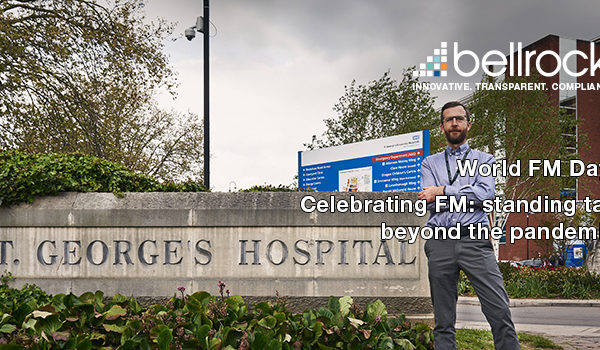Building Compliance Simplified: Closing and reoccupation of our buildings
We find ourselves in troubled times and uncharted waters due to the ongoing Covid-19 crisis. As well as affecting our daily personal and working lives, it is changing the way we are using our properties and workspaces.
Our healthcare, logistics and distribution and food retail properties are working harder than ever. As thousands of people are now working from home or prevented from travelling, pubs, bars, restaurants, shops and gyms are now mainly empty and closed. Additionally, many commercial buildings are moving into shut-down mode.
This has huge implications for maintaining building compliance and critical services to assets and equipment. Decisions normally planned over many months must now be taken within days. With this change of use comes challenges that need to be addressed to ensure that when normal operational protocols resume and some kind of normality returns to our working lives, our buildings are ready to perform again as we want them to, quickly and with as little disruption or further delay to users. This guidance, aligned to statutory compliance specifically, focuses on our properties that have been closed for extended periods of time, normally four weeks or more, and how we deal with ensuring they are safe and can re-open and function normally, as quickly as possible.
Your obligations explained
During any periods of closure, owners, landlords and tenants will still need to maintain their buildings to achieve statutory compliance. They must ensure business critical systems are supported, security is maintained, and may also include inspections to building fabric, some of which may be a requirement to satisfying insurance requirements.
Bellrock are working with our customers taking them through a step-by-step process for maintaining critical services during this low occupancy period ready for rapid and full reactivation when business returns to normal.
Realistically, most buildings, if not all, will reopen when this crisis ends. Although they may be utilised slightly differently and not at full capacity, they will need to be functional, safe and complaint for all the users. Periods of mothballing or reduced occupation may only last for two to three months and as a country, we are still unsure when that will happen, but we must plan now for this re-opening.
Compliance obligations the current lockdown
The lockdown started on March 23rd and best latest estimates are that we will be in the current situation until at least the end of May. This leaves us five weeks to ensure our buildings are ready to ‘get back to work’.
With this expected lockdown to last approximately three months, the ideal position is for all buildings to be maintained along with their normal PPM schedule. This ensures that all systems are safe and certified upon reopening.
Many buildings may not have had their PPM schedules adhered to, so there will be activity required on the building and its systems to ensure it is safe for reoccupation. In certain circumstances such as pubs and bars, there may be a residential dwelling attached or part of the pub that may share operational systems. In cases such as this, it is imperative that the property is maintained as normal throughout lockdown.
Some required systems and assets must be maintained, and any required certification carried out before a building can be opened and reoccupied again. There is no leeway on items covered by statutory and mandatory regulations; any lapsed certificate must be replaced and re-certified before the building can reopen. It is important to note that property insurance may be invalidated unless life safety and building critical systems are not certified in line with their statutory requirements.
Listed below are examples of critical items and systems that may require specific maintenance during periods of closure, or before a building can be re-occupied safely:
- Gas & Oil systems –Water heaters, boilers and space heaters
- Water distribution systems –Hot and cold-water outlets, storage tanks and pipework
- Fire safety systems – Fire alarms, detection systems, suppression systems, firefighting equipment and emergency lighting
- Passenger and goods lifts
- Man safe systems such as eye bolts and cleaning cradles
- Electrical distribution systems – lighting and power
- HVAC plant – air conditioning, heating, air distribution and extract systems
- Power generation systems including fuel storage
Of additional importance, where a maintenance activity or certification is covered under statutory or mandatory rules such as (not exhaustive):
- LOLER – Safe use lifting equipment
- PUWER – Heating ventilation, Air Conditioning
- Fire (HSG-65)
- Electricity at Work (HSG-85)
- Building Safety Regs (BSRIA) Building Services Research Information Association
- Gas Safety Regs (L56) Installation and use of gas systems and appliances
- Pressure systems (L122) Safety of pressure systems
- Legionella (L8)
Key Points:
- Know your assets
- Ensure statutory maintenance certifications are maintained throughout lockdown – lapses will be difficult to retrieve quickly
- Understand your current PPM position across all statutory, critical, optimal and discretionary categories , know what has lapsed
- Plan ahead – re-opening a building and re-certifying equipment and systems will take a few weeks
- Ensure your insurances cover your needs – if statutory and /or critical systems have lapsed PPM, notifications are raised and rectified
The table below is an example to assist in ensuring safety and compliance is achieved in advance of reactivation. Further competent technical guidance should be sought where any doubt exists or assistance is required in understanding the full requirements any reduction in services or mothballing including reactivation.
Dave Richards | COO
FIWFM
dave.richards@bellrockgroup.co.uk
+44 (0)7909 580 418





